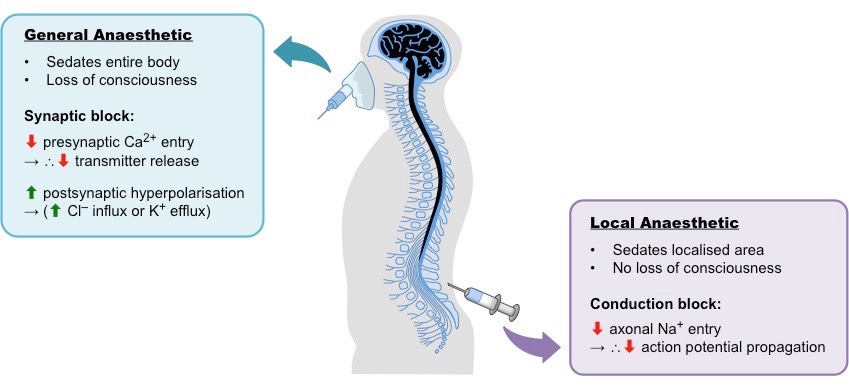![]()
Understanding:
• Anesthetics act by interfering with neural transmissions between areas of sensory perception and the CNS
Anesthetics act on ion channels to block the conduction of sensory nerve signals to the central nervous system
- This results in the loss of sensation (numbness) in the affected region, allowing for surgical interventions to occur
Anesthetics can be grouped into two classes – local anesthetics and general anesthetics
- Local anesthetics only affect a localised region – usually by blocking axonal sodium influx (conduction block)
- General anesthetics affect the whole body – this may involve blocking calcium influx to prevent neurotransmitter exocytosis
General versus Local Anesthesia

![]()
Application:
• The effect of anesthetics on awareness
Different types of anesthetics will affect consciousness in different ways:
- General anesthetics will induce a temporary loss of consciousness as they interfere with neural transmissions in the brain
- Local anesthesia will not result in a loss of consciousness and only cause a reversible loss of sensation to the affected area
General anesthetics are typically inhaled (to affect the whole body), while local anaesthetics are injected into specific regions
- General anesthetics are administered by trained specialists who monitor patient vitals for the duration of the procedure
